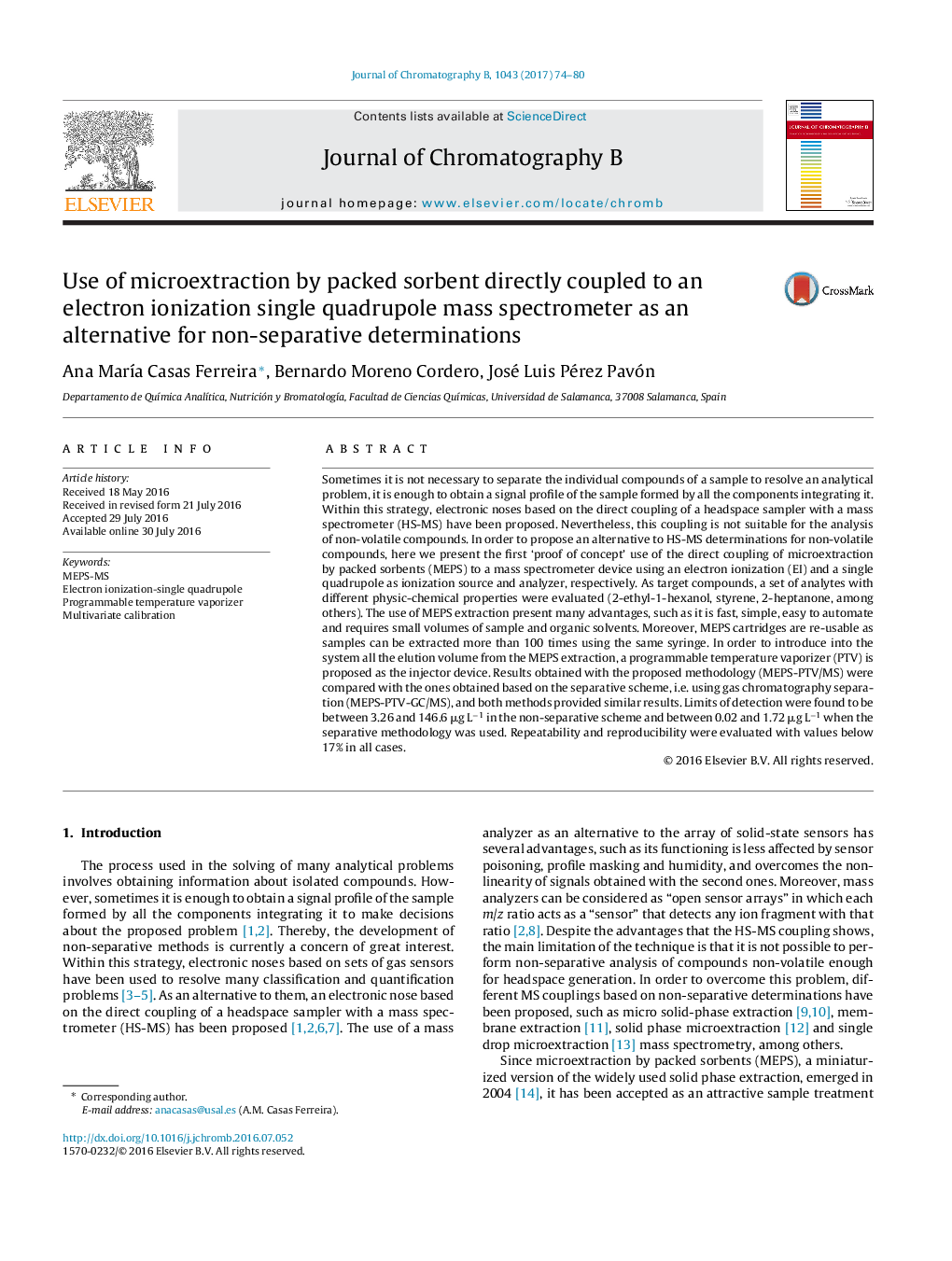| Article ID | Journal | Published Year | Pages | File Type |
|---|---|---|---|---|
| 5136786 | Journal of Chromatography B | 2017 | 7 Pages |
â¢MEPS-MS coupling as an alternative for non-separative determinations.â¢Non-separative analysis of compounds non-volatile enough for headspace generation.â¢PTV proposed in order to introduce all the MEPS elution volume.â¢Easy to automate, minimization of sample manipulation and reduction of errors.â¢Use of multivariate calibration to investigate the applicability of the method.
Sometimes it is not necessary to separate the individual compounds of a sample to resolve an analytical problem, it is enough to obtain a signal profile of the sample formed by all the components integrating it. Within this strategy, electronic noses based on the direct coupling of a headspace sampler with a mass spectrometer (HS-MS) have been proposed. Nevertheless, this coupling is not suitable for the analysis of non-volatile compounds. In order to propose an alternative to HS-MS determinations for non-volatile compounds, here we present the first 'proof of concept' use of the direct coupling of microextraction by packed sorbents (MEPS) to a mass spectrometer device using an electron ionization (EI) and a single quadrupole as ionization source and analyzer, respectively. As target compounds, a set of analytes with different physic-chemical properties were evaluated (2-ethyl-1-hexanol, styrene, 2-heptanone, among others). The use of MEPS extraction present many advantages, such as it is fast, simple, easy to automate and requires small volumes of sample and organic solvents. Moreover, MEPS cartridges are re-usable as samples can be extracted more than 100 times using the same syringe. In order to introduce into the system all the elution volume from the MEPS extraction, a programmable temperature vaporizer (PTV) is proposed as the injector device. Results obtained with the proposed methodology (MEPS-PTV/MS) were compared with the ones obtained based on the separative scheme, i.e. using gas chromatography separation (MEPS-PTV-GC/MS), and both methods provided similar results. Limits of detection were found to be between 3.26 and 146.6 μg Lâ1 in the non-separative scheme and between 0.02 and 1.72 μg Lâ1 when the separative methodology was used. Repeatability and reproducibility were evaluated with values below 17% in all cases.
